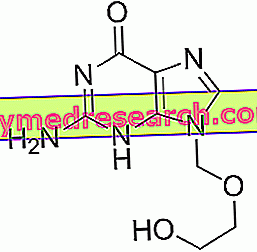What is Noni
Scientific name: Morinda Citrifolia L.
Family : Rubiaceae
Synonyms : Indian mulberry, Nonu, Nono, Bumbo, Lada, Munja and Canary Wood.
Origin of the name

Parts used
The parts mainly used and marketed derive from the fruit: the juice, the puree and the concentrate of the fruits. In Italy, the pharmaceutical forms currently available for Noni (as food or supplement): include juice, freeze-dried capsules and oil.
Physiological and health goals : Immunomodulatory activity, gastric protection activity, detoxifying, tonic and antioxidant action.
Novel food pursuant to Regulation (EC) 258/97 : Maximum daily intake: juice: 30 ml; puree: 26 g; fruit concentrate: 6 g.
Botanical description
The Noni plant ( Morinda citrifolia) is a small evergreen tree originating from South-East Asia: from India to Taiwan, up to northern Australia.

The environmental adaptability of Noni is very high: the plant tolerates sun exposure or shade and arid or humid climates; it can be cultivated on all types of soils (acid, neutral or alkaline) and also withstands high salt concentrations. For these characteristics it is possible to find it near rocky or sandy coasts, in volcanic soils or calcareous clearings.
The Noni tree has variable dimensions, with a height between 3 and 6 meters, it can rarely grow up to 9 m. The leaves are elliptical, large (20-45 cm), shiny and dark green.
The Noni plant is always in activity: it blooms all year round and produces 4-8 kg of fruit every month. The flowers are perfumed, provided with 5 or 6 white petals, they bloom in the shape of a cluster and are hermaphroditic (ie provided both with the male and female apparatus).
The fruit is a sincarpo (a fusion of multiple small fruits) with the characteristic oval and lumpy shape, covered with small bumps, which contain the seeds. Through its maturation phases, the Noni fruit initially takes on a green color, which will turn from yellow to white with full maturation. The ripe pulp is tender and is characterized by a pungent odor and a very strong taste (often recalling a cheese that is too mature). This contains numerous important components including vitamin C, iron, potassium, calcium and sodium. A fruit, it can contain up to 150 seeds of triangular shape and of red-brown color.
Food uses
Noni has been used for several centuries for food purposes. The parts mainly used in the culinary field are ripe fruits (raw and cooked), leaves and roasted seeds.
Curiosity
- In India, Noni leaves are also used as a food for pets and silkworms.
- Historically, some parts of the plant have been used as a natural dye for fabrics and leathers:
- reddish-violet dye, deriving from the Noni bark;
- yellow dye, obtained from the roots (also called "morindone");
- Like other tree species, wood is used as a building material.
- From the seeds, instead, we get an insect repellent oil.
Property
Noni officinal value
The indigenous healers of Polynesia, the Kahunas, have exploited the properties of this plant for centuries to treat the illnesses of the population. In natural medicine, all parts of Noni have been used: bark, roots, leaves, flowers and fruits. In the Polynesian tradition, Noni was used as a healing remedy for various diseases: wounds, skin diseases, respiratory problems, fever and related illnesses of old age. However, it is the fruit - together with the juice that is extracted from it - with its numerous therapeutic properties, which has always represented the most precious part of this plant.
Some uses foreseen by traditional plant medicine are:
| Parts of the plant | Therapeutic properties |
Roots | The root extracts were used to lower blood pressure and to reduce swelling. This part of the Noni plant has the peculiarity of containing the entire spectrum of amino acids. The root was also used in cases of diarrhea and fever.
|
leaves | Wounds, skin redness, hypertension, bleeding, stomach pain, headache, burns, fractures, diabetes, loss of appetite, urinary tract disorders, abdominal bloating, hernias and vitamin A deficiency.
|
Bark |
|
Seeds | Purgative action.
|
Flowers | They gave relief in case of inflammation of the eyes. |
Fruit | Colds, headaches, allergies, congestions, fatigue, bone fractures, bruises, sprains, wounds, tumors, depression, asthma and problems with the digestive system.
|
PLEASE NOTE : the uses of natural extracts in ethnomedicines represent a simple starting point. The researcher can in fact draw from traditional medical uses to test its validity, performing particular studies (botanical, chemical, phytochemical) that allow him to identify the active principles responsible for the hypothesized therapeutic effect. These studies can confirm or disprove the effects established by traditional medicine. As is the case for the vast majority of magnified supplements as "panacea for all ills", the timid evidence on the possible therapeutic effects of Noni has been collected through the application of some of its chemical constituents in very, very restricted, in vitro, su animals etc. As a result, no therapeutic activity (or healing, if desired) can be attracted to Noni (fruit or juice ).



